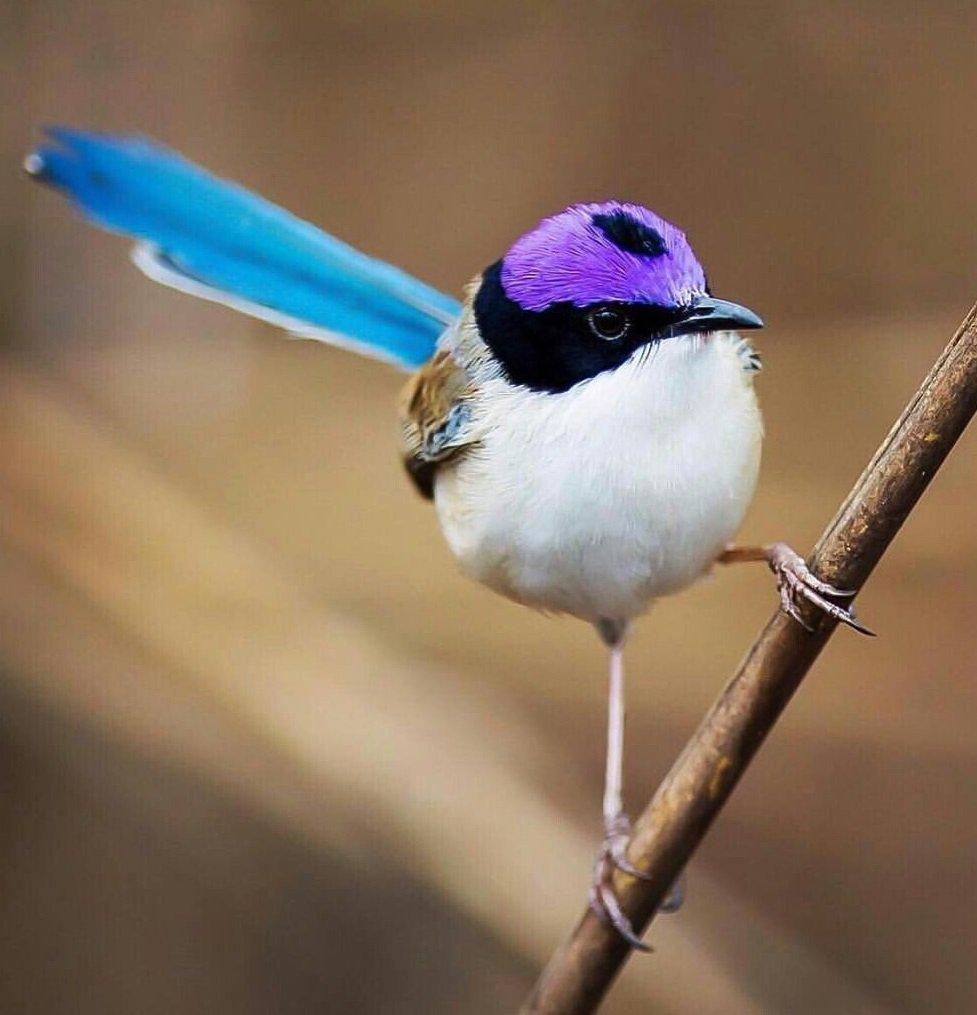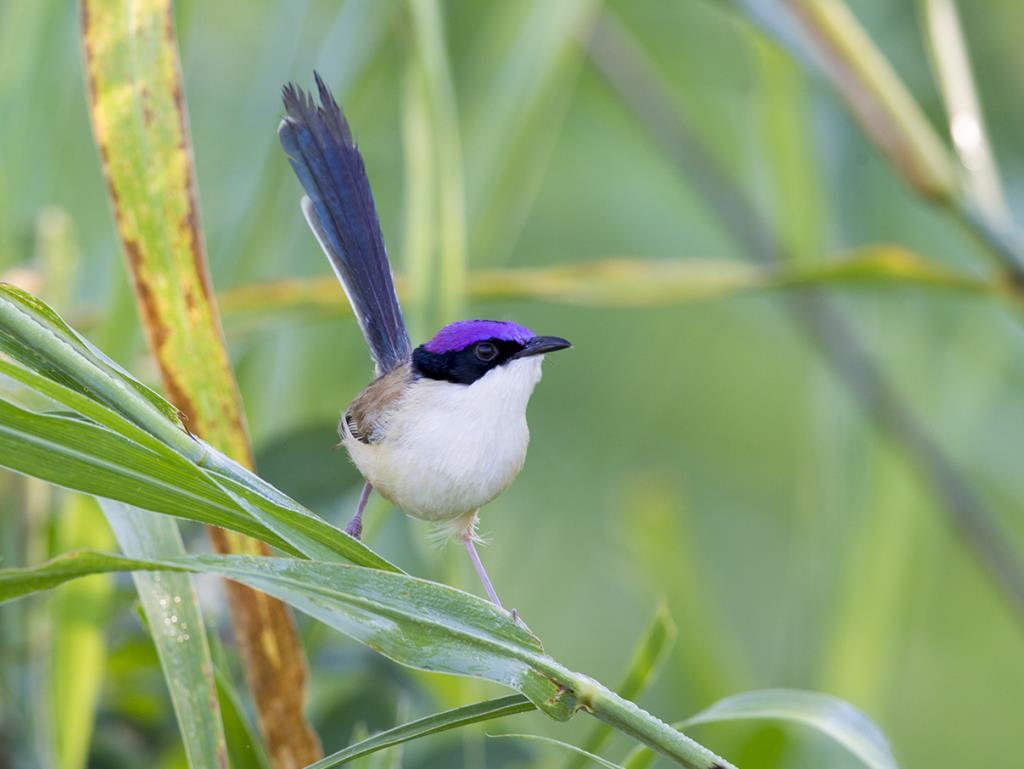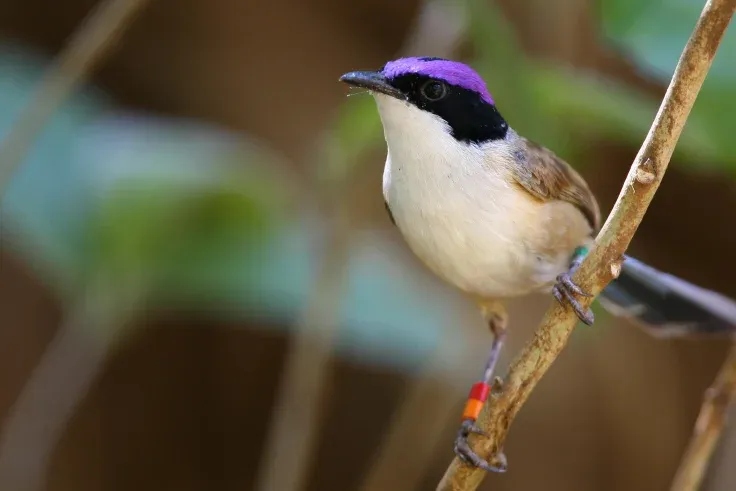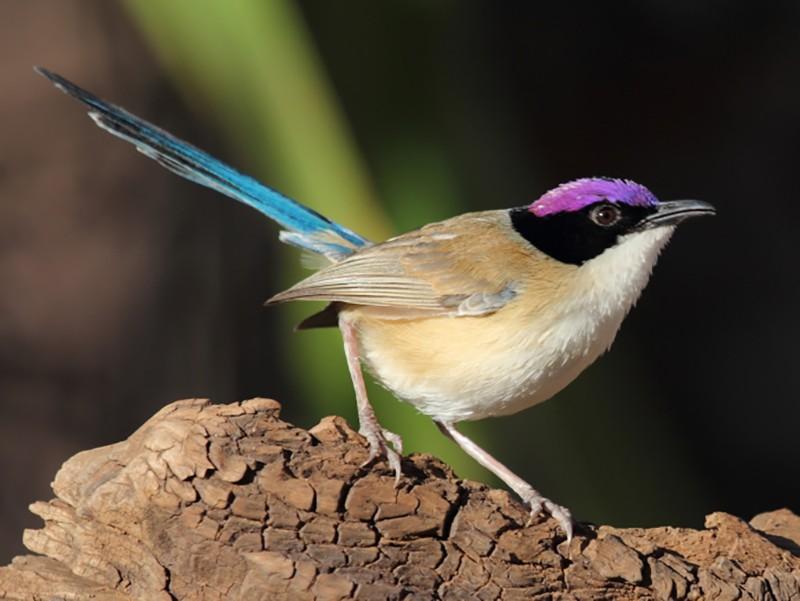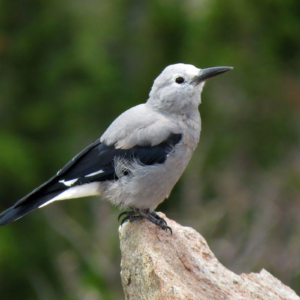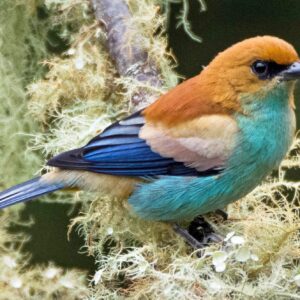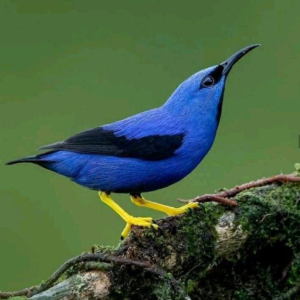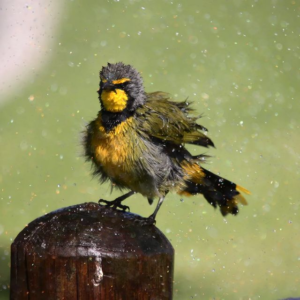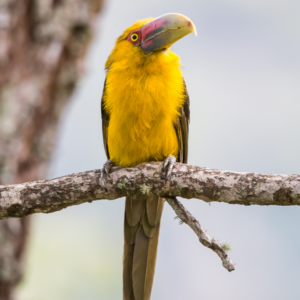The purple-crowned wren (Malurus coronatus) is a fascinating member of the Australasian wren family Maluridae. During the breeding season, the male of this species sports a distinctive purple crown, accompanied by a black eye line and collar. What sets them apart are their deep blue cheeks and tail, which complement their overall brown plumage. Its wings tend to be a more grayish brown, while its belly adorns a creamy buff tone. With a black beak and brownish-gray legs and feet, they have a unique charm.
Females of this species bear a striking resemblance to males, except for the absence of the distinctive purple crown. Instead, they display a rusty cheek patch in place of the male’s black eye line.
These charming birds, purple-crowned kinglets, inhabit the wet and dry tropical regions of northern Australia. They can be found in the Kimberley region of Western Australia, the Victoria River region of the Northern Territory and the southwestern subcoastal zone of the Gulf of Carpentaria in Queensland.
These birds are known for their preference for riparian habitats, and thrive in areas with dense riverside vegetation in northern Australia. They especially prefer well-developed mid-story foliage, predominantly composed of dense shrubs along permanent freshwater streams and rivers, as seen in the Kimberley region. They also find solace in the tall, dense grasses of the rivers in the
Victoria River District.
As primarily insectivorous creatures, purple-crowned kinglets rely on a diet of small invertebrates, including beetles, ants, insects, wasps, grasshoppers, moths, larvae, spiders, and worms. They occasionally supplement their diet with seeds.
Breeding among purple-crowned wrens can occur throughout the year when conditions are suitable. Females usually build their nests close to the ground, in thickets of river grass. These dome-shaped nests are made of fine rootlets, grass, leaves, and strips of bark. A clutch of 2 to 3 eggs is laid on successive days, with the female responsible for incubation over a period of 14 days. Once hatched, the chicks reach full maturity in about 10 days. However, they are still unable to fly and seek refuge in dense cover for a week, where their relatives care for and feed them.
The purple-crowned kinglet, as a species, has a classification of “Least Concern” by the IUCN. However, two recognized subspecies have merited inclusion on national conservation management lists. The western subspecies has moved from Vulnerable to Endangered, while the eastern subspecies qualifies for Near Threatened status. The main threat to these birds is habitat loss, attributed to the construction of dams and the introduction of sheep and cattle.
These unique and vibrant birds offer a glimpse into the incredible biodiversity of Australia’s wildlife, underscoring the importance of preserving their natural habitats for future generations.
